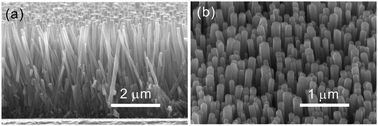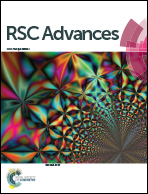Facile synthesis of carbon decorated silicon nanotube arrays as anode material for high-performance lithium-ion batteries†
Abstract
A new facile approach to fabricate carbon decorated Si nanotubes (C@SiNTs) was proposed by using chemical vapor deposition. The as-synthesized C@SiNTs structure revealed excellent electrochemical performance as an anode in lithium ion batteries (LIBs), which delivered a gravimetric capacity as high as 2085 mA h g−1 at 0.2 C rate, and capacity retention of 95% after 200 cycles relative to the capacity value in the 10th cycle. Even the current density increased to 20 C, 421 mA h g−1 specific capacity can still be achieved. Such high specific capacity, excellent cyclability, and rate performance could be attributed to the hollow structure of Si nanotubes, which can effectively accommodate the strain caused during the Li+ uptake and release processes. Meanwhile, the decorated carbon nanoparticles effectively improved the electrical conductivity of the whole electrode which can further improve the specific capacity. The results exhibited here pave a new way to synthesize different Si architectures for high robust and scalable Si-based anodes for lithium ion batteries.


 Please wait while we load your content...
Please wait while we load your content...